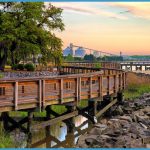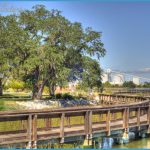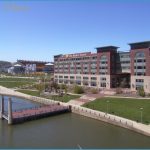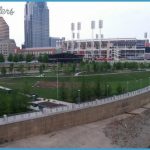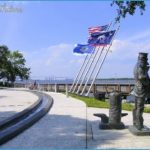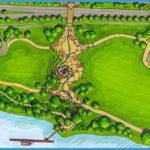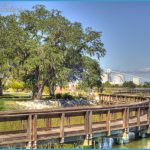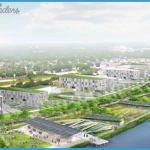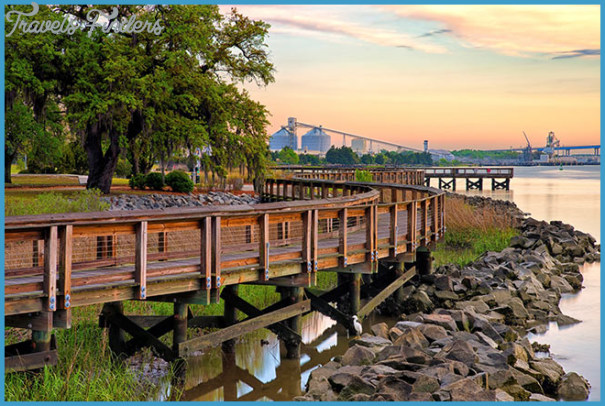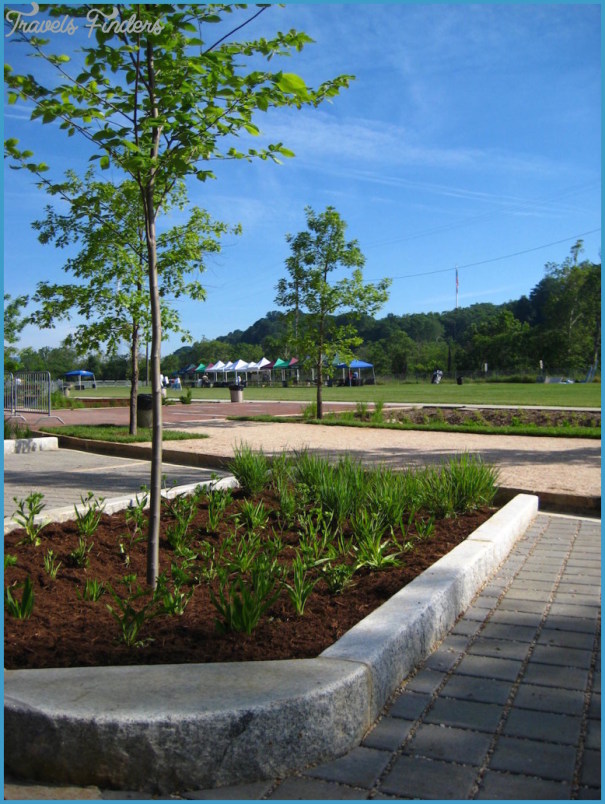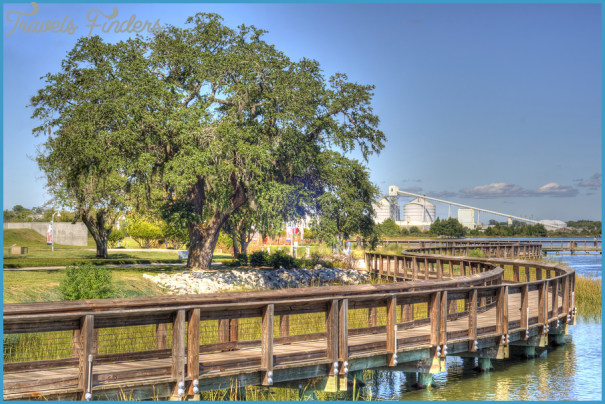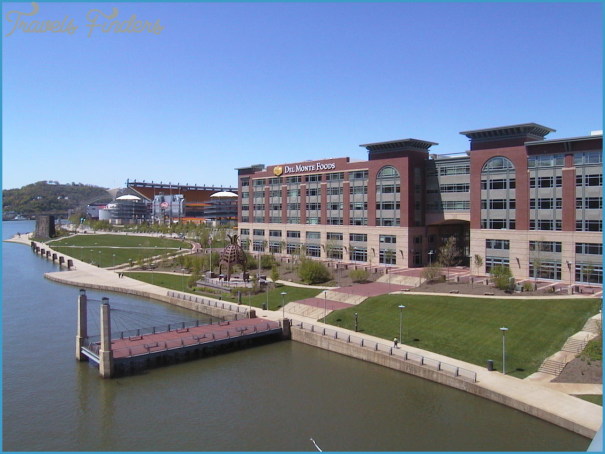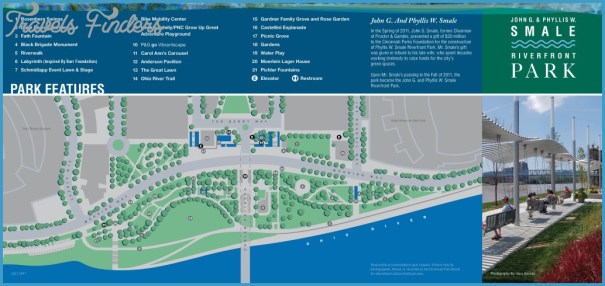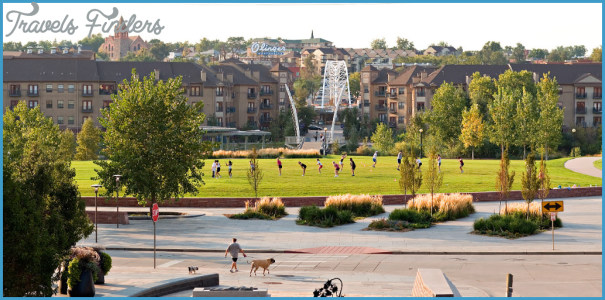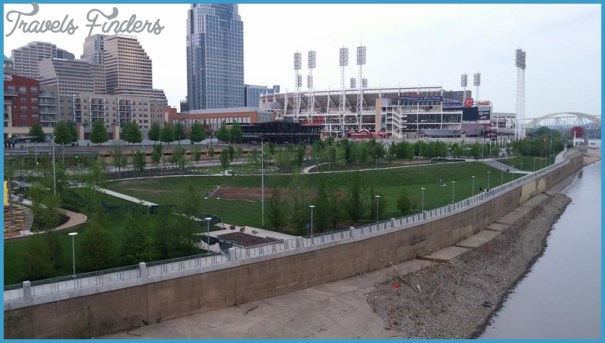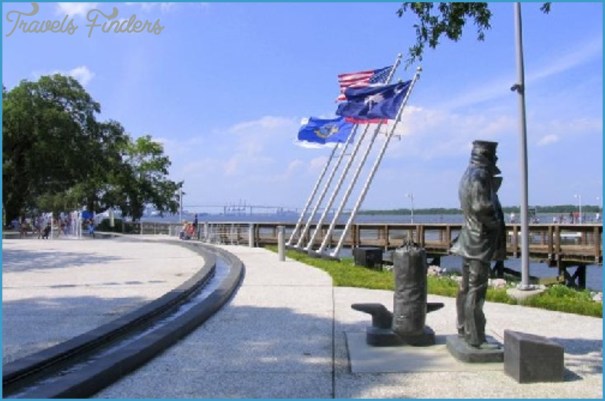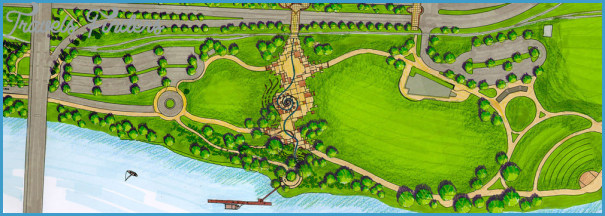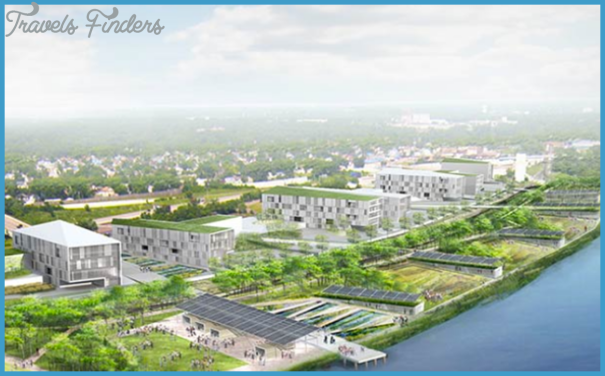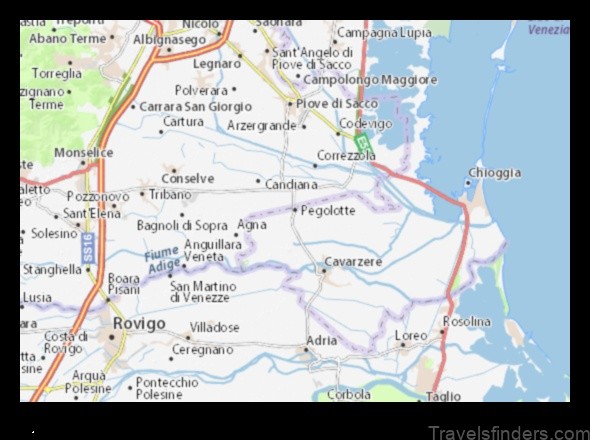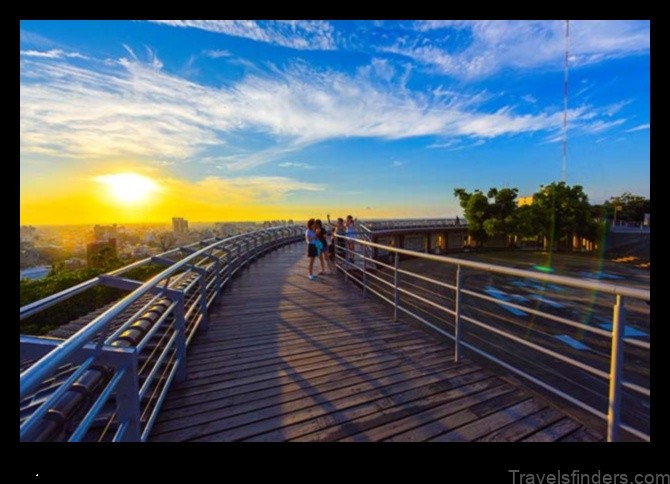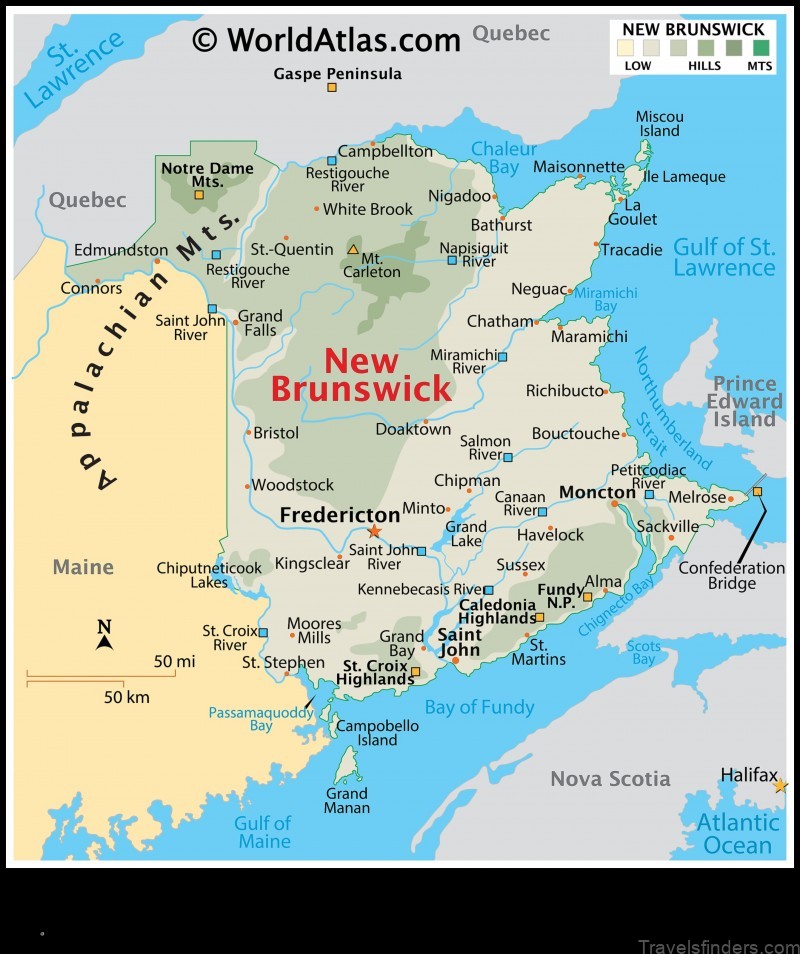RIVERFRONT PARKS
Crossing Moshassuck, Woonasquatucket, and Providence Rivers, Providence, Rhode Island
Architect William D. Warner Completed 1994-2002 Length Various Materials Concrete, steel Type Arch
The city built twelve new bridges, but had to move two rivers to do so.
In 1636 Roger Williams and others seeking religious freedom settled in a propitious spot at the juncture of two rivers that merged and flowed out to the Atlantic. Deeded the land by Narragansett Indian chief Canonicus, Williams named the spot “in commemoration of God’s providence.”
Providence’s location at the head of Narragansett Bay made its fortune: its rivers were crucial commercial arteries. The port gained further prominence during the American Revolution, when British troops closed the rival port of Newport. It continued to grow, thanks to industrial giants like Corliss (steam engines), Brown & Sharpe (machine tools), and Gorham (sterling silver) and a host of firms that produced textiles, rubber goods, and jewelry. That growth came with a cost. In a way unthinkable today, people dumped waste into the rivers until they were fetid open sewers. Progress continued. In 1873 the Crawford Street Bridge was built over the Providence River, and it was continually widened, eventually making the Guinness Book of World Records as the “world’s widest bridge” with a width of 1,147 feet (350 meters). By the 1970s the rivers were buried and downtown was derelict. Most people had forgotten that there had ever been water there. The WaterFire bonfires bring people and light and celebration to the dark streets and silent waterways of Providence. The fires turn the dark water into a river of flickering gold. Log by log, fire sparking fire, night after night, from one person to another, together we reclaim and rebuild our city.
RIVERFRONT PARKS Photo Gallery
Beginning in 1983, and continuing for nearly thirty years, the waterfront was unearthed. First, the snarl of train tracks that held downtown a geographic captive were relocated, followed by the removal of the Crawford Street Bridge. Finally and remarkably, the rivers themselves were moved, a feat that involved carving out new riverbeds so that the confluence of the Moshassuck and Woonasquatucket Rivers could be transferred to a site about 150 feet (46 meters) away.
Architect William D. Warner (1929-2012) envisioned the restored riverfront and then devoted himself to its realization. He designed the eleven acres of intertwined parks along the rivers’ historic banks that include Waterplace Park, Confluence Park, Memorial Park, and Providence River Park, and the 1.5-mile (2.4-kilometer) cobblestone Riverwalk. A dozen arched vehicular and pedestrian bridges, expertly integrated, appear to have been there forever. Varied, consistent, and high-quality lighting, street furniture, and interpretive signage convey that this is a special place. The city, state, and Federal Highway Administration funded the project.
The Crawford Street Bridge, seen here in 1906, was covered over by 1940, a nearly contiguous mass of asphalt, rail tracks, and parking lots.
Today, the riverfront is alive with people, art, and life. Three authentic Venetian gondolas ply the rivers nightly from April through November, joining a stream of canoes, kayaks, and swans. WaterFire, the river’s centerpiece, is a hypnotic blend of fire, music, and street theater that the Providence Journal once described as “the only tribal rite performed by an entire state.” Renewed, the riverfront sparked a post-industrial renaissance, burnishing the city’s already legendary art and food scenes, attracting high-tech industries, and stimulating nearly $1 billion in new development. Here, “hope”the state’s mottohas been reborn.
Faced with brick, granite, and textured concrete, the bridge designs reflect the city’s greatest treasurethree centuries of architecture, much of it intact. In fact, Providence has thirty-five districts, and more than nine hundred properties, listed on the National Register of Historic Places.

